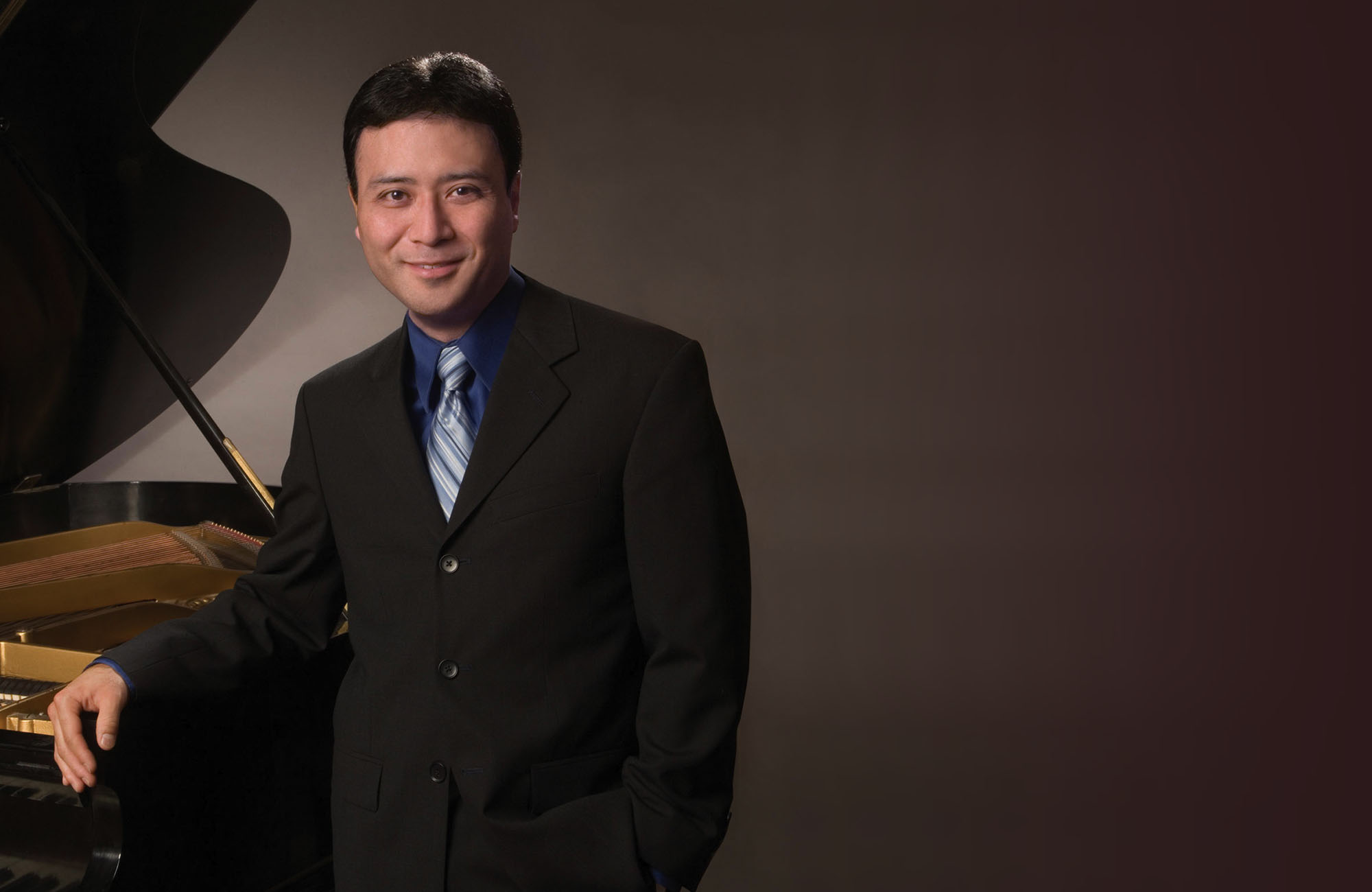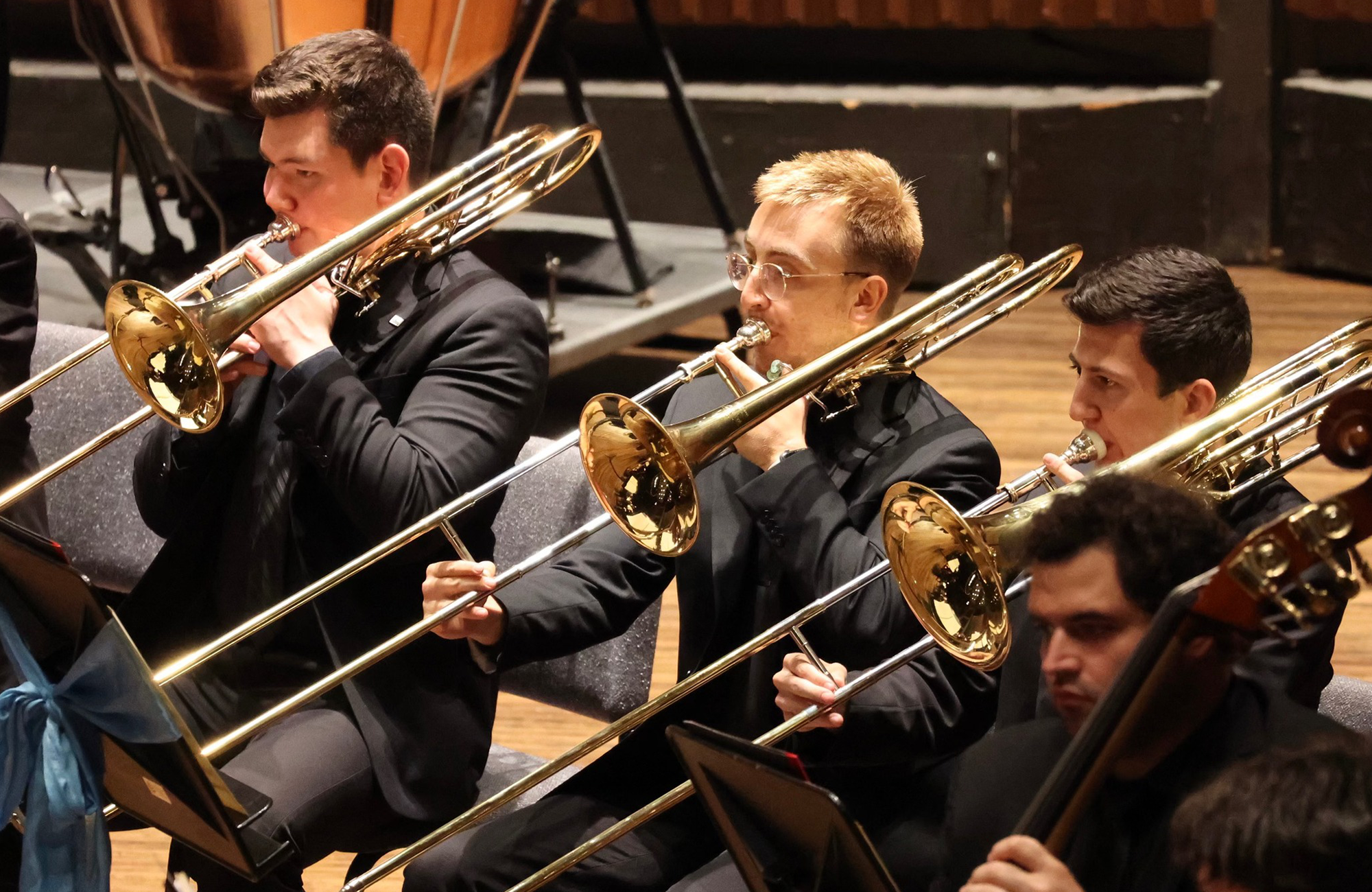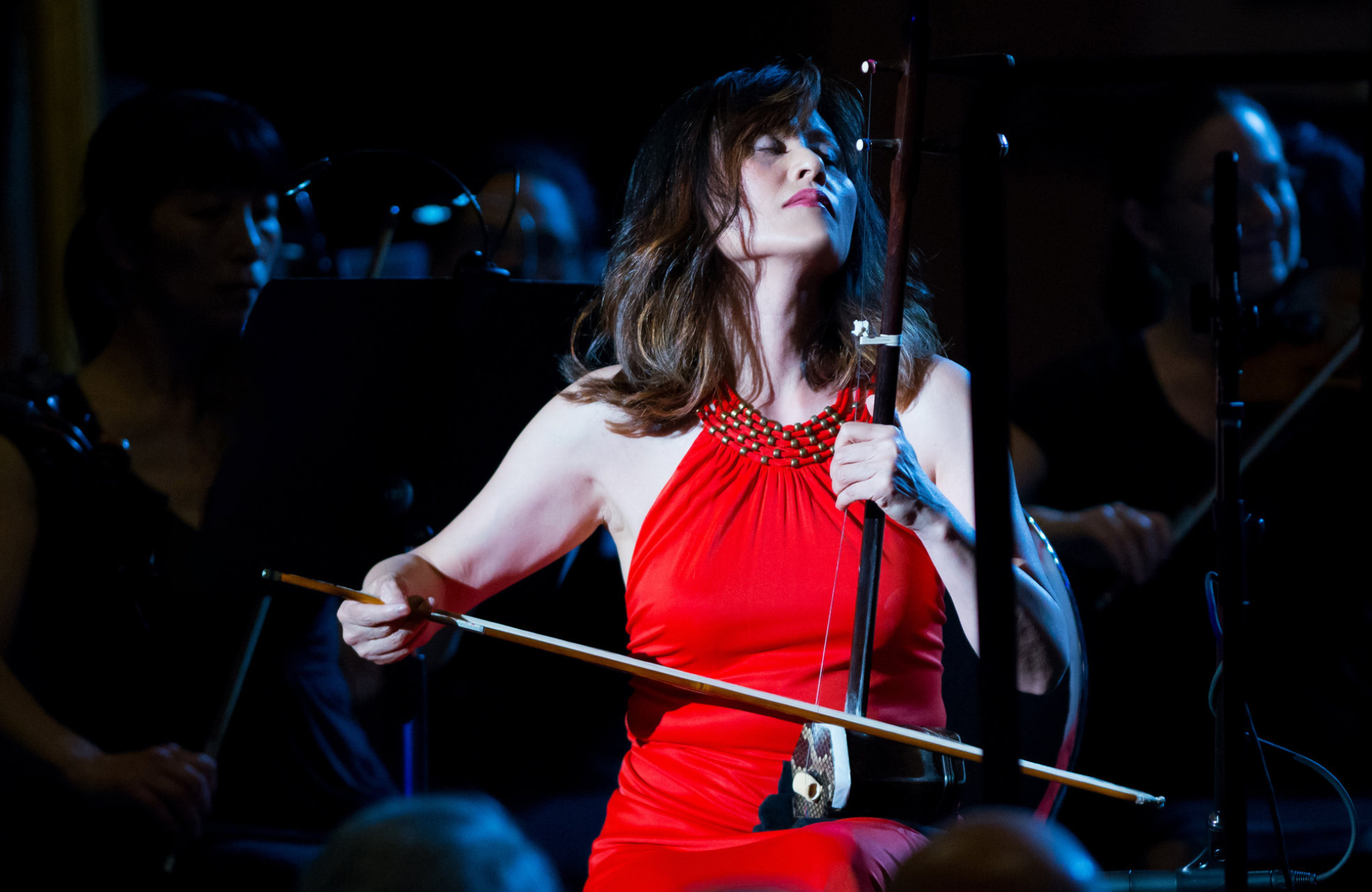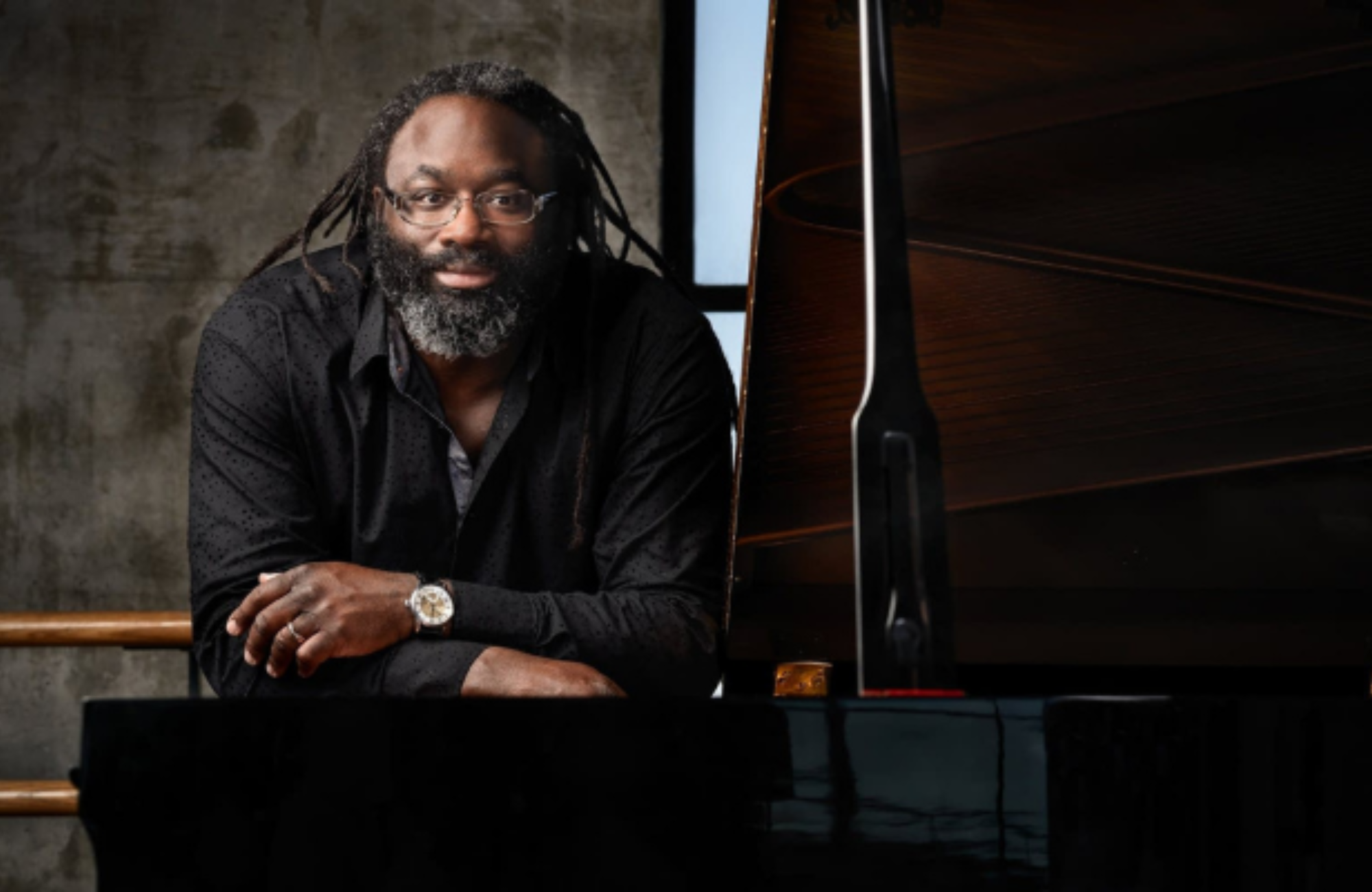Celebrate opening night and Beethoven’s birthday with pianist Jon Nakamatsu and Symphoria! You’ll recognize the gorgeous Allegretto from the Symphony No. 7 from many classic films.
PROGRAM
MONTGOMERY: Banner ![]()
SCHUBERT: Impromptu No. 3 in G-flat Major, Op. 90
CHOPIN: Scherzo No. 4 in E Major
Please note: Due to Covid travel restrictions, Jon Nakamatsu will join us for a special solo piano performance from California.
BEETHOVEN: Symphony No. 7 ![]()
All programs and artists subject to change.
PROGRAM NOTES
“It’s not what we had planned”: so says Octavian at the vertiginous climax of Richard Strauss’s Der Rosenkavalier, when the stability of the opera’s romantic world is upended. Nor is this concert what we had planned. Originally, we had intended to launch the season with a high-powered all-Beethoven concert, before a live audience, as part of our two-season celebration of the 250th anniversary of the composer’s birth in 1770. Since then, Covid-19 and the police killing of George Floyd (among others) have upended our world, too. So we’re offering a different kind of event, in ...
“It’s not what we had planned”: so says Octavian at the vertiginous climax of Richard Strauss’s Der Rosenkavalier, when the stability of the opera’s romantic world is upended. Nor is this concert what we had planned. Originally, we had intended to launch the season with a high-powered all-Beethoven concert, before a live audience, as part of our two-season celebration of the 250th anniversary of the composer’s birth in 1770. Since then, Covid-19 and the police killing of George Floyd (among others) have upended our world, too. So we’re offering a different kind of event, in two ways.
First, the manner of presentation has been altered in response to the pandemic. Since it’s impossible to perform before an audience in the hall, we’ll be streaming the concert to you in your homes. And since travel restrictions have made it impossible for soloist Jon Nakamatsu to come to Syracuse to join us in the Beethoven Third Concerto as originally planned, he has agreed to play (and introduce) some solo music by Beethoven’s successors from his home: the Impromptu in G-flat Major, op. 90/3 by Franz Schubert (1797–1828) and the Scherzo No. 4 in E, op. 54 by Frédéric Chopin (1810–1849). Second, the orchestral part of the program has been slightly revised to match the new socio-political situation in which we find ourselves.
The anchor of the evening remains the same—Beethoven’s Symphony No. 7 (1811–1812), since the work turns out to fit our current moment well. True, while Beethoven is widely recognized as a political composer, the Seventh may not seem to have an overt agenda in the way that the Third and Ninth do. Yet it was composed during a period of historical trauma, toward the end of the Napoleonic Wars. And it was premiered at a benefit concert for soldiers injured at the Battle of Hanau, sharing the program with his Wellington’s Victory, a potboiler celebrating Wellington’s victory over the French at Vitoria. From the beginning, therefore, the work—despite the lack of an explicit program—shared the democratic, anti-authoritarian edge of such pieces as the prison-rescue opera Fidelio (the final version of which was premiered just a few months later). That socially committed aura has remained for over two centuries. The second movement was arranged by activist folksinger Pete Seeger as a song whose opening words (grammar sacrificed to fit the rhythm) are “We’ll work together, though we work different”; Daniel Barenboim chose the Seventh to celebrate the fall of the Berlin Wall.
The symphony is in the traditional four movements—although, as often with Beethoven, those movements don’t work in entirely traditional ways. It begins with an ambiguous and slowish introduction. Lasting around four minutes, it’s probably the longest of any symphony written to that point, and is sufficiently long that you might think you were actually in the exposition of the movement. Then, after a few measures of hesitation, it springs into a Vivace based on an obsessively repeated rhythmic figure—giving the work a rhythmic focus that lasts, with little respite, until the end of the finale. Indeed, the Seventh has no true slow movement: the second movement (the most popular since the first performance, when it had to be encored) is an Allegretto (rather brisk) rather than the Andante or Adagio that might be expected, and it’s similarly laced with a repeated rhythmic figure. Wagner’s famous description of the Seventh as “the Apotheosis of the Dance” was surely nourished by this consistent energy.
The third movement, a scherzo and trio, is conductor Larry Loh’s favorite. In part, that’s because of the contrast between the “levity and propulsion” of the scherzo sections and the “static-ness” of the trio. But it’s also because “it has so many surprises”—the largest of which is its overall form, which “leaves the audience wondering what’s going to happen next.” Normally, after the trio, the scherzo would return to round things out. But just as the movement ought to end, we return to the trio, followed by yet another race through the scherzo. Surely we’re ready for the end now? No, the trio seems to come back yet again—but after a few quizzical bars, wandering between major and minor, the curtain suddenly drops. After all this, it’s hard to believe there’s more energy to come—but the hyperkinetic finale, with what Larry calls its “overwhelming surges,” drives us to a monumental conclusion.
“We’ll work together, though we work different”: Pete Seeger’s words could apply to our opening work as well, added to the program in the wake of this summer’s events as a reconfirmation of Symphoria’s commitment to racial justice and equity and of our obligation to speak out against racial violence. In 2014, Jessie Montgomery (b. 1981) was commissioned by the Joyce Foundation and Sphinx (an organization dedicated to nurturing young African-American and Latinx string players) to compose a work marking the 200th anniversary of The Star Spangled Banner. Asking herself “What does an anthem for the 21st century sound like in today’s multi-cultural environment?”, she came up with the “exploration of contradictions” you’ll hear tonight: Banner, for string quartet and string orchestra. It is a richly textured work in which the national anthem—Banner’s primary musical ingredient—is played off against, challenged by, and combined with a throng of other folk songs and patriotic tunes, most radically in the Ivesian final section.
Most prominent are James Weldon Johnson’s and J. Rosamond Johnson’s “Lift Every Voice” (often known as the Black National Anthem) and the Mexican national anthem. But you can also hear, among others, “Lo Eterno” (a Cuban song about Che Guevara), Woody Guthrie’s “This Land is Your Land,” and even “Cumberland Gap,” a traditional song taken up by the Confederate soldiers. As Jessie puts it, “We’re all here, whether you like it or not.” Look out, too, for a passage about four minutes in, soon after the beginning of the section entitled “Dirge” (introduced by weird glissandos and imitations of drum taps), where the quartet emulates the recitation of the Pledge of Allegiance—including the slight lack of unanimity familiar in group recitations— played over “Lift Every Voice.” It’s a reminder, she says, that “the promises within the pledge are not being met.” In a way, then, Banner “a musical protest”—but one that celebrates our “ideals of freedom” even as it excoriates “the realities of injustice and oppression.”
Peter J. Rabinowitz
Have any comments or questions? Please write to me at prabinowitz@ExperienceSymphoria.org
FEATURED ARTISTS
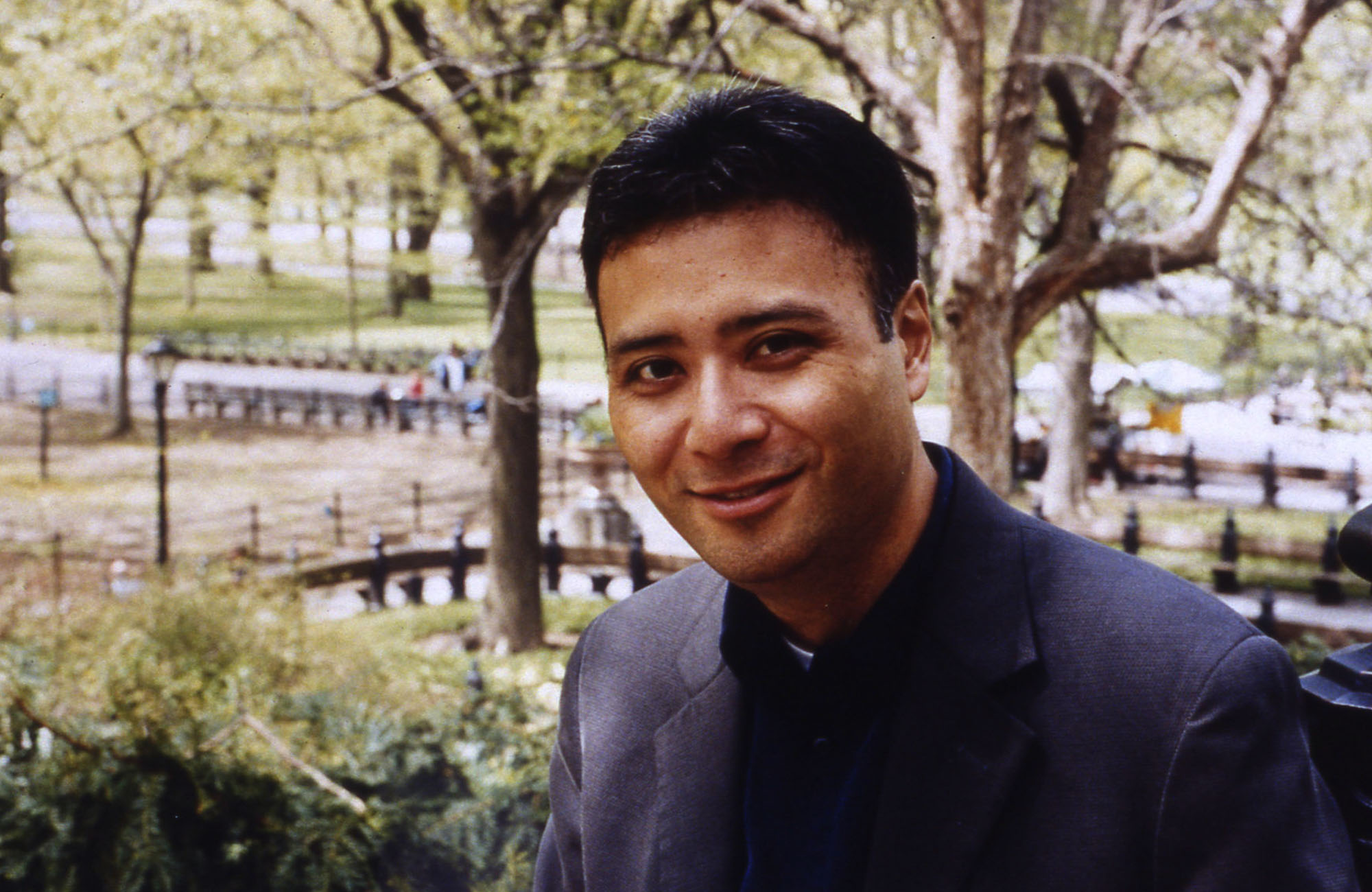
Now in his third decade of touring worldwide, American pianist Jon Nakamatsu continues to draw critical and public acclaim for his intensity, elegance and electrifying solo, concerto and chamber music performances. Catapulted to international attention in 1997 as the Gold Medalist of the Van Cliburn International Piano ...
Now in his third decade of touring worldwide, American pianist Jon Nakamatsu continues to draw critical and public acclaim for his intensity, elegance and electrifying solo, concerto and chamber music performances. Catapulted to international attention in 1997 as the Gold Medalist of the Van Cliburn International Piano Competition—the only American to achieve this distinction since 1981—Mr. Nakamatsu subsequently developed a multi-faceted career that encompasses recording, education, arts administration and public speaking in addition to his vast concert schedule.
In 2021, Mr. Nakamatsu returned to live performances throughout the United States and in Europe. Between 2020 and the spring of 2021, he was engaged in a myriad of online events including recording, masterclasses and virtual interviews and lectures for organizations such as Chautauqua Institution Piano Festival, Colorado College Summer Music Festival, Boston University’s Tanglewood Institute, Van Cliburn Foundation and Chopin Foundation of the United States. In collaboration with clarinetist Jon Manasse, Mr. Nakamatsu also produced and curated an online series of interviews and historical performances taken from the archives of Cape Cod Chamber Music Festival, where he and Mr. Manasse have served as Artistic Directors since 2007.
Mr. Nakamatsu has been guest soloist with over 150 orchestras worldwide, including those of Baltimore, Berlin, Boston, Cincinnati, Dallas, Detroit, Florence, Los Angeles, Milan, San Francisco, Seattle, Tokyo and Vancouver. He has worked with such esteemed conductors as Marin Alsop, Sergiu Comissiona, James Conlon, Philippe Entremont, Hans Graf, Marek Janowski, Raymond Leppard, Gerard Schwarz, Stanislaw Skrowaczewski, Michael Tilson Thomas and Osmo Vänskä.
As a recitalist, Mr. Nakamatsu has appeared in New York City’s Carnegie Hall and Lincoln Center, Washington DC’s Kennedy Center for the Performing Arts, Musée d’Orsay and Théâtre du Châtelet in Paris and in major centers such as Boston, Chicago, Houston, London, Milan, Munich, Prague, Singapore, Warsaw and Zurich. In Beijing he has been heard at the Theater of the Forbidden City, the Great Hall of the People, China Conservatory, and National Centre for the Performing Arts. His numerous summer engagements included appearances at the Aspen, Tanglewood, Ravinia, Caramoor, Vail, Wolftrap, Colorado, Brevard, Britt, Colorado College, Evian, Interlochen, Klavierfestival Ruhr, Santa Fe and Sun Valley festivals. In 2024 he will participate in an extended residency at Bowdoin Festival in Maine and return to Chautauqua Institution in New York where he has served as Artist-in-Residence since the summer of 2018.
With clarinetist Jon Manasse, Mr. Nakamatsu tours as a member of the Manasse/Nakamatsu Duo. Following its Boston debut in 2004, the Duo released its first CD for harmonia mundi usa (Brahms Sonatas for Clarinet and Piano) which received the highest praise from The New York Times Classical Music Editor, James Oestreich, who named it among the “Best of the Year” for 2008. A frequent chamber musician, Mr. Nakamatsu has collaborated repeatedly with ensembles such as the Emerson, Escher, Jupiter, Miró, Modigliani, Prazak, St. Lawrence, Tokyo and Ying string quartets, Imani Winds and Berlin Philharmonic Wind Quintet with whom he made multiple tours beginning in 2000. Mr. Nakamatsu’s 13 CDs recorded for harmonia mundi usa have garnered extraordinary critical praise. An all-Gershwin recording with Jeff Tyzik and Rochester Philharmonic Orchestra featuring Gershwin’s Rhapsody in Blue and Concerto in F remained in the top echelons of Billboard’s classical charts for over six months. Other acclaimed discs include the recording premiere of Lukas Foss’ first Piano Concerto with Carl St. Clair and Pacific Symphony, Brahms Piano Quintet with Tokyo String Quartet in the quartet’s final recording as an ensemble, and a solo recording including Robert Schumann’s Second Piano Sonata whose YouTube posting has garnered over 600K hits.
Mr. Nakamatsu has been profiled extensively in print, radio, television and online. He has appeared on CBS Sunday Morning, in Readers Digest magazine and recently on Live from Here! with Chris Thile. In 1999, Mr. Nakamatsu performed at The White House at the special invitation of President and Mrs. Clinton. He has also performed for the United States Mayor’s Convention in San Francisco and in 2001 was the featured guest artist during the opening and dedication of the Japanese American Memorial to Patriotism During World War II in Washington DC.
A former high school teacher of German with no formal conservatory training, Mr. Nakamatsu studied privately with Marina Derryberry for over 20 years beginning at the age of six; worked with Karl Ulrich Schnabel since the age of 9; and trained for 10 years in composition, theory and orchestration with Dr. Leonard Stein of University of Southern California’s Schoenberg Institute. Mr. Nakamatsu holds undergraduate and graduate degrees from Stanford University in German Studies and secondary education. In 2015, he joined the piano faculty of San Francisco Conservatory of Music and in 2023 the Department of Music at Stanford University. He lives in the Bay Area with his wife Kathy and young son Gavin.

Described as bringing an “artisan storyteller’s sensitivity… shaping passages with clarity and power via beautifully sculpted dynamics… revealing orchestral character not seen or heard before” (Arts Knoxville) Lawrence Loh enjoys a dynamic career as a conductor of orchestras all over the world.
After an extensive two ...
Described as bringing an “artisan storyteller’s sensitivity… shaping passages with clarity and power via beautifully sculpted dynamics… revealing orchestral character not seen or heard before” (Arts Knoxville) Lawrence Loh enjoys a dynamic career as a conductor of orchestras all over the world.
After an extensive two year search, Lawrence Loh was recently named Music Director of the Waco Symphony Orchestra beginning in the Spring of 2024. Since 2015, he has served as Music Director of The Syracuse Orchestra (formerly called Symphoria), the successor to the Syracuse Symphony Orchestra. “The connection between the organization and its audience is one of the qualities that’s come to define Syracuse’s symphony as it wraps up its 10th season, a milestone that might have seemed impossible at the beginning,” (Syracuse.com) The Syracuse Orchestra and Lawrence Loh show that it is possible to create a “new, more sustainable artistic institution from the ground up.”
Appointed Assistant Conductor of the Pittsburgh Symphony in 2005, Mr Loh was quickly promoted to Associate and Resident Conductor within the first three years of working with the PSO. Always a favorite among Pittsburgh audiences, Loh returns frequently to his adopted city to conduct the PSO in a variety of concerts. Mr. Loh previously served as Music Director of the West Virginia Symphony Orchestra, Music Director of the Northeastern Pennsylvania Philharmonic, Artistic Director and Principal Conductor of the Syracuse Opera, Music Director of the Pittsburgh Youth Symphony Orchestra, Associate Conductor of the Dallas Symphony Orchestra, Associate Conductor of the Colorado Symphony Orchestra and Music Director of the Denver Young Artists Orchestra.
Mr. Loh’s recent guest conducting engagements include the San Francisco Symphony, Dallas Symphony, North Carolina Symphony, Baltimore Symphony, Sarasota Orchestra, Florida Orchestra, Pensacola Symphony, Atlanta Symphony, National Symphony, Detroit Symphony, San Diego Symphony, Seattle Symphony, National Symphony (D.C.), Utah Symphony, Rochester Philharmonic, Indianapolis Symphony, Calgary Philharmonic, Buffalo Philharmonic, Albany Symphony and the Cathedral Choral Society at the Washington National Cathedral. His summer appearances include the festivals of Grant Park, Boston University Tanglewood Institute, Tanglewood with the Boston Pops, Chautauqua, Sun Valley, Shippensburg, Bravo Vail Valley, the Kinhaven Music School and the Performing Arts Institute (PA).
As a self-described “Star Wars geek” and film music enthusiast, Loh has conducted numerous sold-out John Williams and film music tribute concerts. Part of his appeal is his ability to serve as both host and conductor. “It is his enthusiasm for Williams’ music and the films for which it was written that is Loh’s great strength in this program. A fan’s enthusiasm drives his performances in broad strokes and details and fills his speaking to the audience with irresistible appeal. He used no cue cards. One felt he could speak at filibuster length on Williams’ music.” (Pittsburgh Tribune)
Mr Loh has assisted John Williams on multiple occasions and has worked with a wide range of pops artists from Chris Botti and Ann Hampton Callaway to Jason Alexander and Idina Menzel. As one of the most requested conductors for conducting Films in Concert, Loh has led Black Panther, Star Wars (Episodes 4-6), Jaws, Nightmare Before Christmas, Jurassic Park, Casablanca, The Wizard of Oz and Singin’ in the Rain, among other film productions.
Lawrence Loh received his Artist Diploma in Orchestral Conducting from Yale, his Masters in Choral Conducting from Indiana University and his Bachelor of Arts from the University of Rochester. Lawrence Loh was born in southern California of Korean parentage and raised in Carlisle, Pennsylvania. He and his wife Jennifer have a son, Charlie, and a daughter, Hilary. Follow him on instagram @conductorlarryloh or Facebook at @lawrencelohconductor or visit his website, www.lawrenceloh.com


